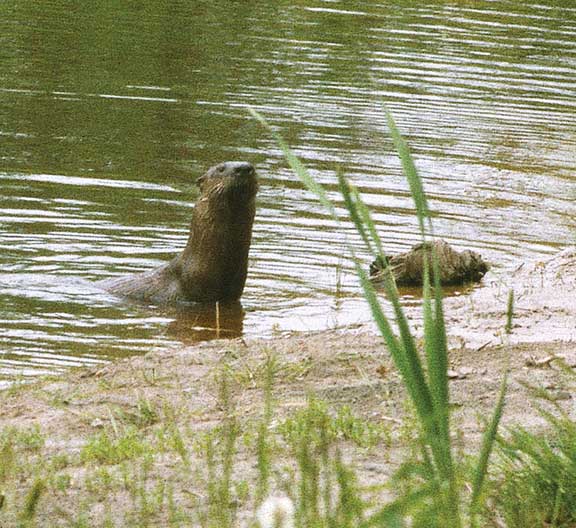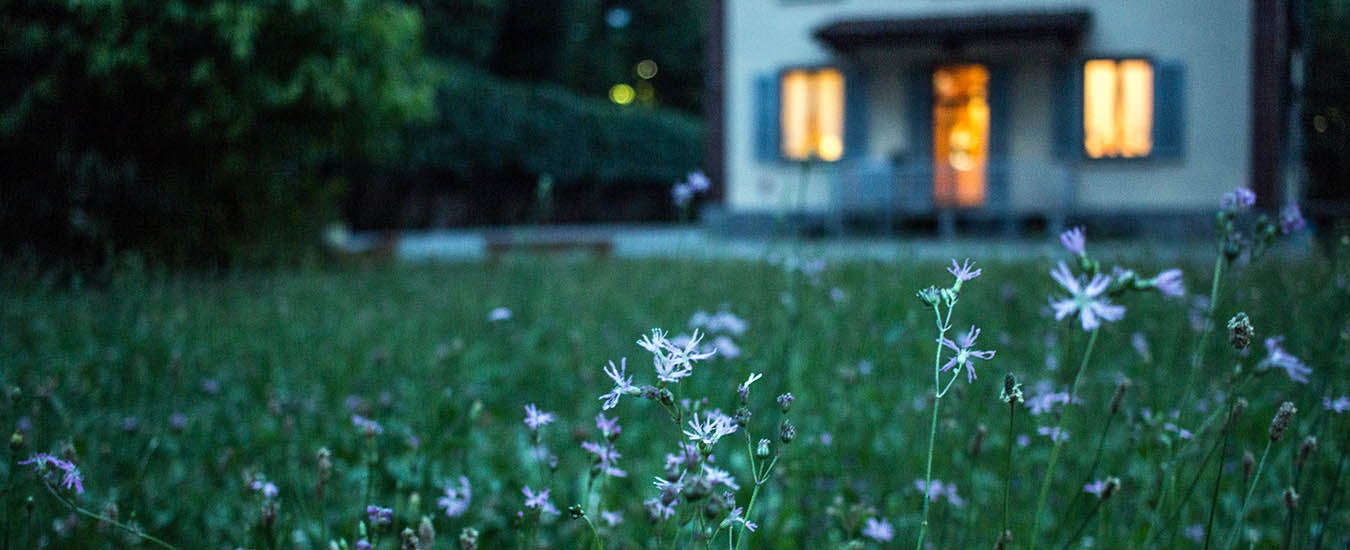Would our neighbours adopt their new watering hole? A two-year update on the wild events in our front 40.
For decades after building his home near a salt marsh and harbour in northeastern Nova Scotia, Bob Bancroft dreamed of replacing the tangle of alders and willows below the house with a pond. In 2003 the dream became a reality. He and his wife, Alice, dug out a 15,000 square-foot area with irregular, meandering borders for headlands and coves. There would be fish access from the salt marsh and harbour. Underwater, two- to three-foot and five- to seven-foot zones would provide a habitat for aquatic plants to grow, while a 10-foot-deep area would allow fish and amphibians to winter below the ice. A small island would offer ground-nesting ducks and birds refuge from raccoons and skunks.
In Saltscapes' January/February 2005 issue Bob wrote about the pond's evolution from mud hole to intricate ecosystem, brimming with wildlife activity, within the first year (2004). This story chronicles some of the activity that took place in year two.
During winter bald eagles and red-tailed hawks bathed in the pond's shallows. Whitetailed deer came regularly to drink the fresh water at its outlet. On many fine-weather evenings, with the sun low in the west and darkness settling in, two- to three-dozen mourning doves landed at the outflow for one last nightcap. Wings whistled in unison as they set off to roost overnight in the quiet shelter of a nearby softwood forest.
The ice over most of the pond was gone by April 6th. As if on cue, a two-year-old beaver arrived that afternoon. Banished from its colony by parents who were preparing for the birth of new beaver kits, the youngster huddled glumly under bushes near the water's edge. After nightfall it moved on to explore sites upstream. Travelling the small brook at night may have proved dangerous-while roaming the woods with a Mi'kmaq friend in August I found a carcass of a young beaver, apparently attacked and eaten by coyotes.

Six black ducks also landed on "ice-opening day," and battles immediately erupted over who was claiming the pond. We observed their courtships and contests over pond ownership for weeks. A pair of mallards added to the mayhem. Eventually two pairs of black ducks settled in, with one very determined drake (male) doggedly sticking with one of the pairs, no matter how much they spurned him. With the ducks settling in and a contingent of four great blue herons fishing around the water's edge, the pond came alive.
By mid May, fish began jumping on calm evenings. I cast a fly out on the water and quickly had a strike-sea-run speckled trout had returned from the harbour. Or had they never left? Rainbow smelt also came up the brook to spawn. A school of young smelts circled the pond during a dry period, growing by the week as they waited for rain to permit their travel down to the ocean.
The mostly wet and chilly weather persisted until the end of June, presenting a challenge for many species including the female black ducks who were incubating eggs in nests nearby on the forest floor.
A pair of very vocal shorebirds called willets also created a nest of eggs, well hidden in a spray of grass beside the pond.
Another visitor arrived in late June. At first it seemed like a speedboat, but turned out to be an inquisitive, playful otter. I photographed it terrorizing the fish population and stopping to look and sniff at me, giving me the once-over.
In early July a female black duck arrived with seven very small ducklings. This was late in the year-I suspect she lost her first eggs, and nested a second time. We watched the youngsters cavorting over the pond as they learned to navigate.
The area's clay soil holds water well-and allows for telling tracks along the shore-but it makes for mucky wading. I built a small floating dock attached to the shore by a walkway, which enables us to get out over the water to swim and to leave the pond without developing "club" feet.
Sunbathing on the new dock became a favourite summer pastime not only for us, but for a host of cold-blooded creatures like damselflies and dragonflies who seek the sun's warmth after cool nights. Biting insects like blackflies, mosquitoes and horseflies didn't stand much of a chance with the squadrons of hungry dragonflies patrolling the shore and dock. We appreciated their presence and occasionally rescued females who were stranded on the water's surface while trying to lay eggs. When evening arrived, bats skimmed the pond in continued pursuit of insects.
During the summer muskrat damage became a concern. Dens were being dug everywhere and the ground was collapsing along the shore. Many of the aquatic seedlings we had planted were being eaten, and the island was in danger of disappearing. One day a mink popped into the pond. The muskrats mustered to face this predator, and as we watched them body surfing en masse around the pond, splashing to scare the mink away, we realized we had an expanding population problem. Fortunately muskrats like apples and, after being enticed into live traps, they were transported to other good habitats.
One day late summer, while I was sitting on the dock staring into the water, a two-and-a-half-inch-long "stick" gradually rose, undulating from the bottom, lifted its posterior out of the water and then returned back into the pond's depths. I couldn't believe it-an underwater walking stick! Soon I was seeing them everywhere, strange insects called water scorpions. Preying upon other aquatic insects like water boatmen, these claw-equipped biters also capture small fish and tadpoles. They breathe through a pair of tubes on the end of their abdomen that they poke through the water's surface.
For a time after being built, the pond remained bare-bottomed-there were few underwater hiding places. By last year, however, there were plenty of plants in the shallows, some I'd planted and others that grew naturally. Aquatic life now had a better chance of survival.
Young great blue herons came regularly in late summer to hunt frogs, tadpoles and fish. Due to the refraction of light as it enters and leaves water, objects underwater are not where they appear to be… and learning to hunt through water requires skills that are acquired over time.
On several occasions I watched a young heron standing in the shallows with a stick in its beak. It launched the stick into the water with a rapid sideways thrust of its head and neck. While the stick was still moving underwater, it quickly caught it again, and repeated the sequence. It appears that herons refine their hunting skills with practice sticks.
More than anything, watching the pond's evolution from a muddy, water-filled hole to a dynamic ecosystem has increased my sense of wonder, and renewed my realization of how much I have yet to learn about the natural world.
Now, if only dogs could learn to throw their own sticks.....
